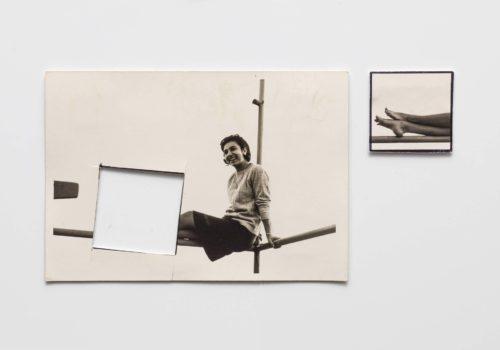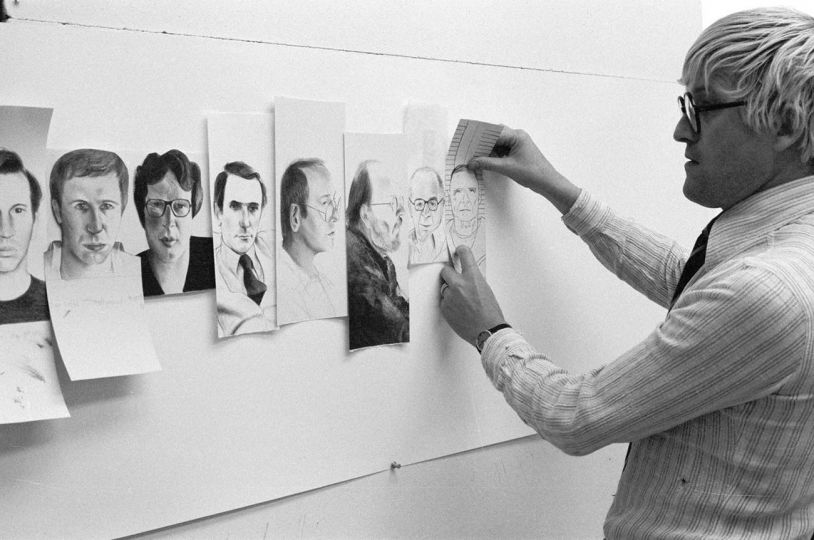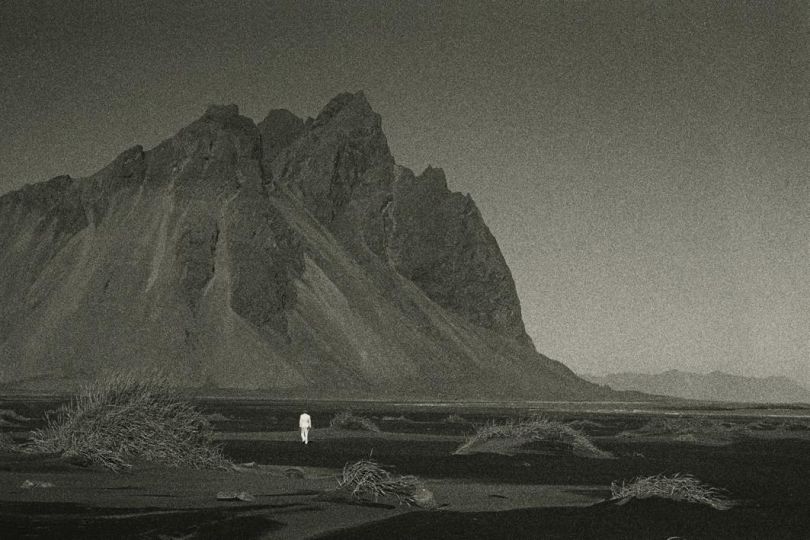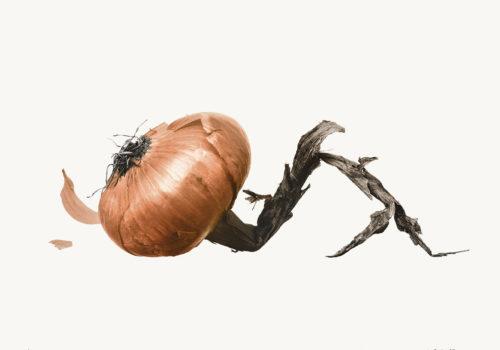The Sit Down gallery presents a dialogue between the French photographer Chantal Stoman and her Italian colleague Marco Lanza. By reducing photography to a game of cuts, collages and cropping, the latter delivers a work on photographic time that is as playful as it is brilliant.
To write that photography confronts death, or revolves around it, is from now on a used and hackneyed cliché, which without the words of Roland Barthes in La Chambre claire no longer finds much echo. Photography is concerned with time. Each photograph is the marker of a history, of a past moment, which will no longer be and which is adorned with a veneer of nostalgia as soon as we look at it.
Does this mean that we should not work on these notions? The photographic archive, whether intimate or anonymous, is an inexhaustible material. In the wake of Christian Boltanski, Hans-Peter Feldman or Andrea Stultiens, photography and contemporary art, with their now porous borders, have made it a material as well as an object.
The photographer Marco Lanza, born in Florence in 1957, has been caught like others by a curious collector’s habit. In addition to a work established between journalistic assignments (Harper’s Bazar, Die Zeit, Sunday Times) and personal series, he began to collect boxes of analog photographic archives in 2018, not knowing what they contained. From sepia-toned photographs of a mountain vacation to the millimeter-perfect moments of a father and daughter, from shots of a conference to family or sporting events, these materials cover a long time, from the 1900s to about 1970.
These archives have nothing to do with each other. They look at each other as an anonymous mass and are distinguished, shot after shot, by the extreme difference of their scenes. Marco Lanza intervenes on these photographs contrary to a collector who, compulsively, would seek to exhaust a single register. The example was given at the time of Sam Stourdzé at the Rencontres d’Arles, with the often intriguing presentation of motley collections, like the Claude Ribouillaut collection in 2017.
Lanza could just as well make history, history of unity, even unity of colors. The example is given these days with the beautiful presentation of The Anonymous Project at the Magnum gallery, an initiative led by Lee Shulman and which gives to see the kodachrome prints taken in the British middle class from 1950 to 1980.
From the archive, paths open up, trickle down and scatter. Collectors’ whims and artists’ presentations orchestrate inventive displays. But more rare are those who, like Marco Lanza, intervene on the material itself, to underline its art as well as its historical character.
Lanza goes through each photograph with a magnifying glass, so to speak, seeking to isolate a precise detail from a scene. He uses “a sheet of opal Plexiglas with a square hole in the center to crop the photographs […] concentrating on what [seems] interesting to his eye,” says Chiara Dall’Olio, curator at the Fondazione Modena Arti Visive.
After collecting, Lanza isolates, cuts out, makes holes, cuts through, then classifies, gathers, hierarchizes before collating, contrasting, superimposing and bordering, framing. And it’s hard to believe that he doesn’t smile to himself when the picture is finished, happy about his work.
On the benches of nursery school, we learn these verbs and gestures of action and measure. Classifying and then recreating is one of our main cognitive engines, and one of the most common levers of the self-taught artist. Charlotte Laubard’s exhibition L’Enigme autodidacte (The Self-taught Enigma) showed this wonderfully at the Musée d’art moderne et contemporain de Saint-Étienne Métropole (2020) and we can find in Lanza’s use of the archive as a playground, in this practice of reclassification and transformation, similarities with Henry Darger.
There is in this curious work, simple as all good ideas, a form of joy, if not laughter. Certainly his large formats depersonalize the human figure. And some of his assemblages, perhaps even the most elegant, play with the portrait to move the eye from the face to the outdated dresses and costumes of the past century. There is undeniably a resistance to the multiplicity of images of our time, and each of the compositions asserts the power of banality.
But there is above all something else, this feeling of gaiety, of light euphoria which takes the eye when suddenly, in front of a painting, a detail offers itself to us. Oh, it’s silly to say yes. It’s a guilty pleasure, but who hasn’t thought with happiness, all satisfied with oneself, pleased to be able to touch his neighbor’s arm: “did you see that little detail”?
I have the heart to believe that Marco Lanza is one of those naughty spirits, with a sharp eye. He has turned the art of detail into humor, and humor into compositions full of meaning. Like the archive, like the moment which is anchored, these spirits are looked at without boredom.
Marco Lanza and Chantal Stoman – Erased MemoriesSit Down Gallery
4 Rue Sainte-Anastase
75003 Paris
Until October 29th
https://sitdown.fr



















